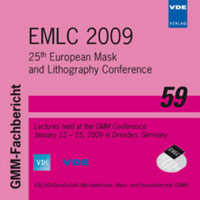Residual-free imprint for sensor definition
Conference: EMLC 2009 - 25th European Mask and Lithography Conference
01/12/2009 - 01/15/2009 at Dresden, Germany
Proceedings: EMLC 2009
Pages: 8Language: englishTyp: PDF
Personal VDE Members are entitled to a 10% discount on this title
Authors:
Mayer, A.; Bogdanski, N.; Möllenbeck, S.; Scheer, H.-C. (Microstructure Engineering, University of Wuppertal, Rainer-Gruenter-Str. 21, 42119 Wuppertal, Germany)
Abstract:
For the preparation of interdigitated sensor devices with nanometre sized electrodes a low-cost route is followed. The central technique used for electrode definition is nanoimprint. To imprint the larger contact areas as easy as the electrodes, the contacts are broken down into a grid. In order to end up with a highly uniform residual layer the concept of ‘partial cavity filling’ is utilised, resulting in an almost negligible layer thickness. The metallic electrodes are defined by sputtering and lift-off directly after imprint, where a previous etching of the residual layer is not required. The results show that the concept works. With this strategy, preparation of an interdigitated sensor requires nothing but spin-coating, nanoimprinting and sputtering/lift-off.


